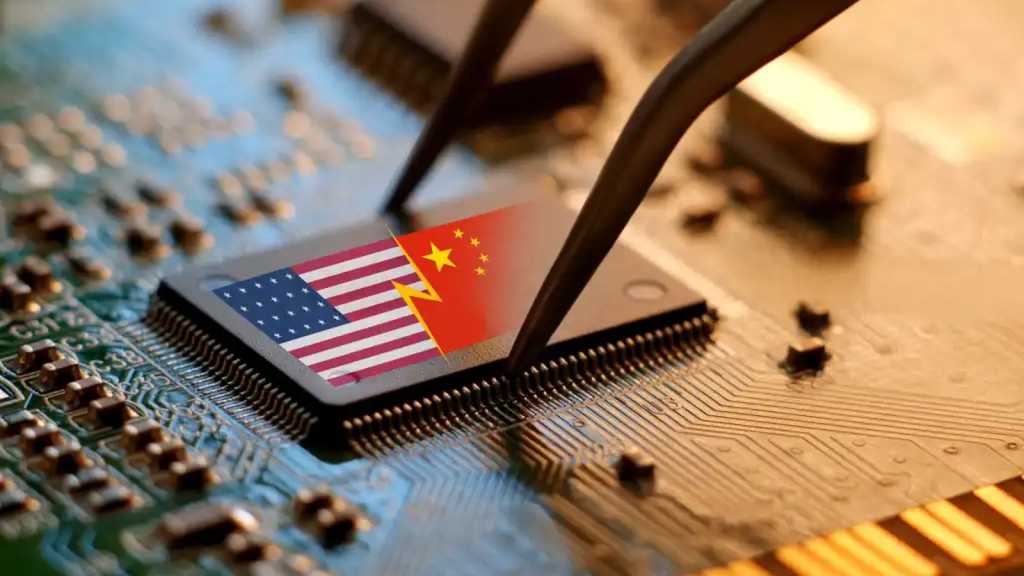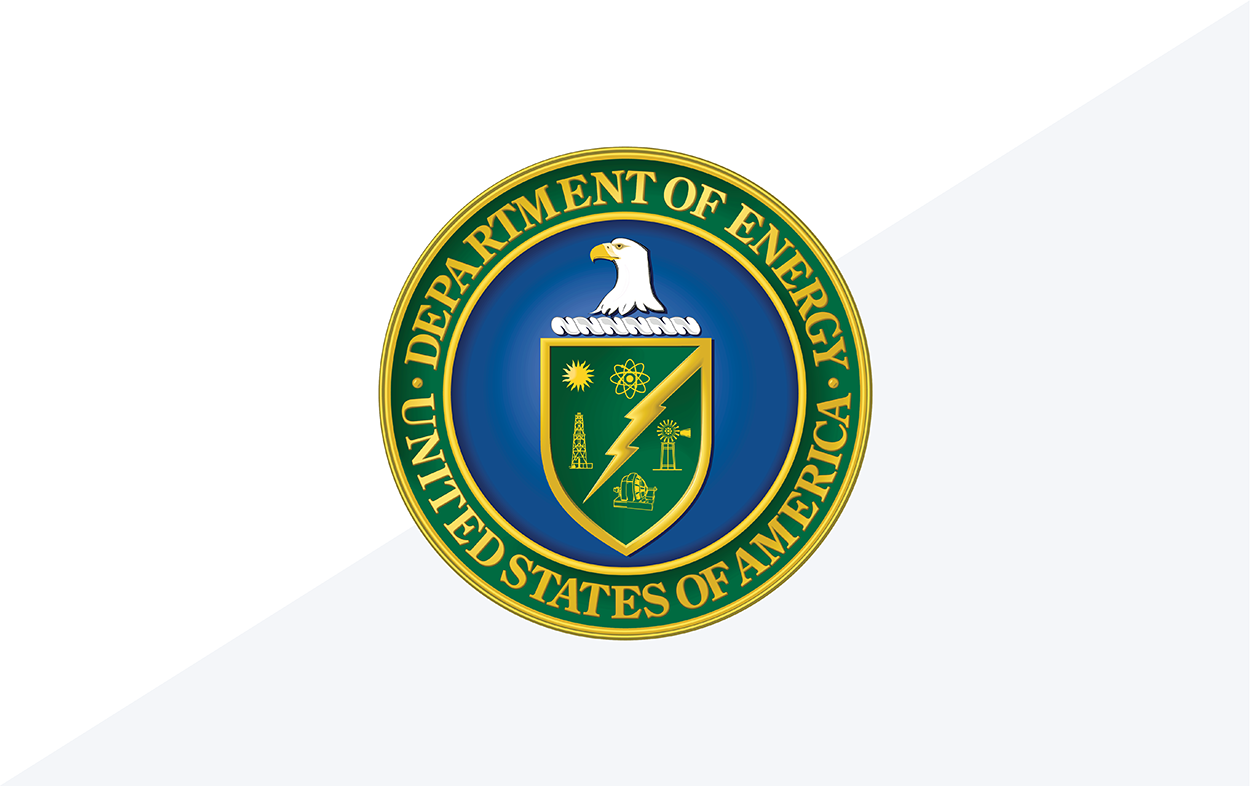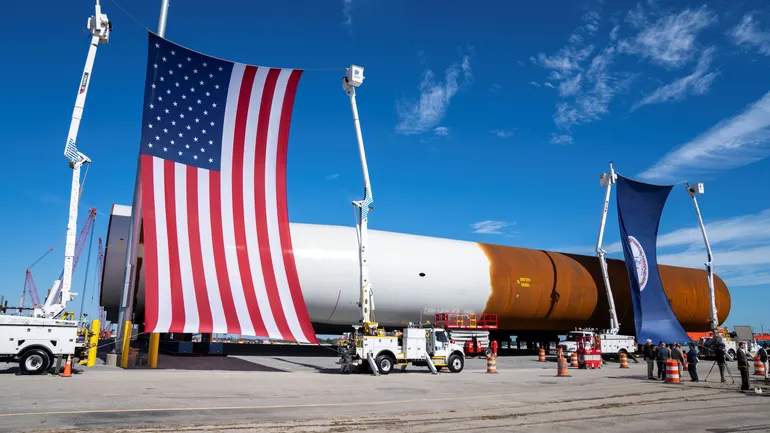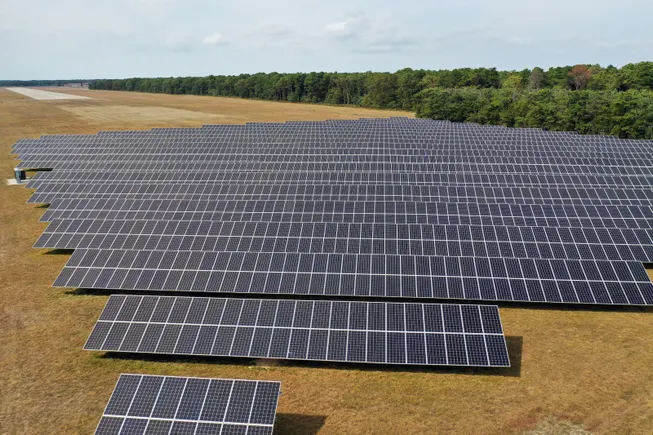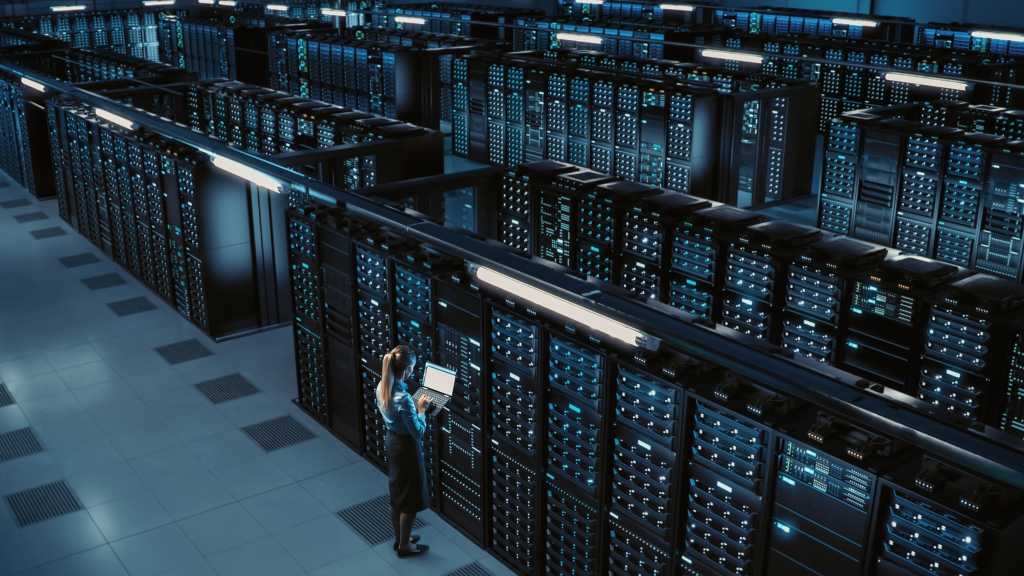After seizing the summer with a blitz of powerful, freely available new open source language and coding focused AI models that matched or in some cases bested closed-source/proprietary U.S. rivals, Alibaba’s crack “Qwen Team” of AI researchers is back again today with the release of a highly ranked new AI image generator model — also open source.
Qwen-Image stands out in a crowded field of generative image models due to its emphasis on rendering text accurately within visuals — an area where many rivals still struggle.
Supporting both alphabetic and logographic scripts, the model is particularly adept at managing complex typography, multi-line layouts, paragraph-level semantics, and bilingual content (e.g., English-Chinese).
In practice, this allows users to generate content like movie posters, presentation slides, storefront scenes, handwritten poetry, and stylized infographics — with crisp text that aligns with their prompts.
The AI Impact Series Returns to San Francisco – August 5
The next phase of AI is here – are you ready? Join leaders from Block, GSK, and SAP for an exclusive look at how autonomous agents are reshaping enterprise workflows – from real-time decision-making to end-to-end automation.
Secure your spot now – space is limited: https://bit.ly/3GuuPLF
Qwen-Image’s output examples include a wide variety of real-world use cases:
- Marketing & Branding: Bilingual posters with brand logos, stylistic calligraphy, and consistent design motifs
- Presentation Design: Layout-aware slide decks with title hierarchies and theme-appropriate visuals
- Education: Generation of classroom materials featuring diagrams and precisely rendered instructional text
- Retail & E-commerce: Storefront scenes where product labels, signage, and environmental context must all be readable
- Creative Content: Handwritten poetry, scene narratives, anime-style illustration with embedded story text
Users can interact with the model on the Qwen Chat website by selecting “Image Generation” mode from the buttons below the prompt entry field.

However, my brief initial tests revealed the text and prompt adherence was not noticeably better than Midjourney, the popular proprietary AI image generator from the U.S. company of the same name. My session through Qwen chat produced multiple errors in prompt comprehension and text fidelity, much to my disappointment, even after repeated attempts and prompt rewording:
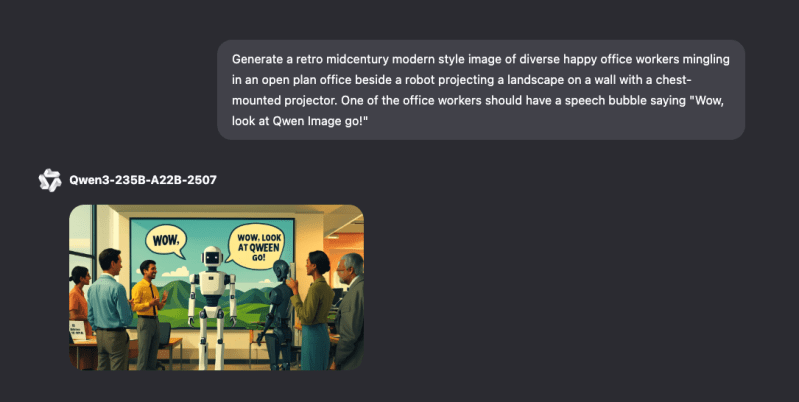
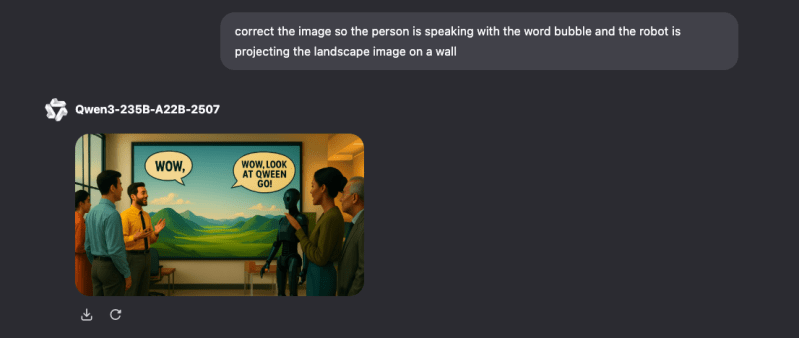
Yet Midjourney only offers a limited number of free generations and requires subscriptions for any more, compared to Qwen Image, which, thanks to its open source licensing and weights posted on Hugging Face, can be adopted by any enterprise or third-party provider free-of-charge.
Licensing and availability
Qwen-Image is distributed under the Apache 2.0 license, allowing commercial and non-commercial use, redistribution, and modification — though attribution and inclusion of the license text are required for derivative works.
This may make it attractive to enterprises looking for an open source image generation tool to use for making internal or external-facing collateral like flyers, ads, notices, newsletters, and other digital communications.
But the fact that the model’s training data remains a tightly guarded secret — like with most other leading AI image generators — may sour some enterprises on the idea of using it.
Qwen, unlike Adobe Firefly or OpenAI’s GPT-4o native image generation, for example, does not offer indemnification for commercial uses of its product (i.e., if a user gets sued for copyright infringement, Adobe and OpenAI will help support them in court).
The model and associated assets — including demo notebooks, evaluation tools, and fine-tuning scripts — are available through multiple repositories:
In addition, a live evaluation portal called AI Arena allows users to compare image generations in pairwise rounds, contributing to a public Elo-style leaderboard.
Training and development
Behind Qwen-Image’s performance is an extensive training process grounded in progressive learning, multi-modal task alignment, and aggressive data curation, according to the technical paper the research team released today.
The training corpus includes billions of image-text pairs sourced from four domains: natural imagery, human portraits, artistic and design content (such as posters and UI layouts), and synthetic text-focused data. The Qwen Team did not specify the size of the training data corpus, aside from “billions of image-text pairs.” They did provide a breakdown of the rough percentage of each category of content it included:
- Nature: ~55%
- Design (UI, posters, art): ~27%
- People (portraits, human activity): ~13%
- Synthetic text rendering data: ~5%
Notably, Qwen emphasizes that all synthetic data was generated in-house, and no images created by other AI models were used. Despite the detailed curation and filtering stages described, the documentation does not clarify whether any of the data was licensed or drawn from public or proprietary datasets.
Unlike many generative models that exclude synthetic text due to noise risks, Qwen-Image uses tightly controlled synthetic rendering pipelines to improve character coverage — especially for low-frequency characters in Chinese.
A curriculum-style strategy is employed: the model starts with simple captioned images and non-text content, then advances to layout-sensitive text scenarios, mixed-language rendering, and dense paragraphs. This gradual exposure is shown to help the model generalize across scripts and formatting types.
Qwen-Image integrates three key modules:
- Qwen2.5-VL, the multimodal language model, extracts contextual meaning and guides generation through system prompts.
- VAE Encoder/Decoder, trained on high-resolution documents and real-world layouts, handles detailed visual representations, especially small or dense text.
- MMDiT, the diffusion model backbone, coordinates joint learning across image and text modalities. A novel MSRoPE (Multimodal Scalable Rotary Positional Encoding) system improves spatial alignment between tokens.
Together, these components allow Qwen-Image to operate effectively in tasks that involve image understanding, generation, and precise editing.
Performance benchmarks
Qwen-Image was evaluated against several public benchmarks:
- GenEval and DPG for prompt-following and object attribute consistency
- OneIG-Bench and TIIF for compositional reasoning and layout fidelity
- CVTG-2K, ChineseWord, and LongText-Bench for text rendering, especially in multilingual contexts
In nearly every case, Qwen-Image either matches or surpasses existing closed-source models like GPT Image 1 [High], Seedream 3.0, and FLUX.1 Kontext [Pro]. Notably, its performance on Chinese text rendering was significantly better than all compared systems.
On the public AI Arena leaderboard — based on 10,000+ human pairwise comparisons — Qwen-Image ranks third overall and is the top open-source model.
Implications for enterprise technical decision-makers
For enterprise AI teams managing complex multimodal workflows, Qwen-Image introduces several functional advantages that align with the operational needs of different roles.
Those managing the lifecycle of vision-language models — from training to deployment — will find value in Qwen-Image’s consistent output quality and its integration-ready components. The open-source nature reduces licensing costs, while the modular architecture (Qwen2.5-VL + VAE + MMDiT) facilitates adaptation to custom datasets or fine-tuning for domain-specific outputs.
The curriculum-style training data and clear benchmark results help teams evaluate fitness for purpose. Whether deploying marketing visuals, document renderings, or e-commerce product graphics, Qwen-Image allows rapid experimentation without proprietary constraints.
Engineers tasked with building AI pipelines or deploying models across distributed systems will appreciate the detailed infrastructure documentation. The model has been trained using a Producer-Consumer architecture, supports scalable multi-resolution processing (256p to 1328p), and is built to run with Megatron-LM and tensor parallelism. This makes Qwen-Image a candidate for deployment in hybrid cloud environments where reliability and throughput matter.
Moreover, support for image-to-image editing workflows (TI2I) and task-specific prompts enables its use in real-time or interactive applications.
Professionals focused on data ingestion, validation, and transformation can use Qwen-Image as a tool to generate synthetic datasets for training or augmenting computer vision models. Its ability to generate high-resolution images with embedded, multilingual annotations can improve performance in downstream OCR, object detection, or layout parsing tasks.
Since Qwen-Image was also trained to avoid artifacts like QR codes, distorted text, and watermarks, it offers higher-quality synthetic input than many public models — helping enterprise teams preserve training set integrity.
Looking for feedback and opportunities to collaborate
The Qwen Team emphasizes openness and community collaboration in the model’s release.
Developers are encouraged to test and fine-tune Qwen-Image, offer pull requests, and participate in the evaluation leaderboard. Feedback on text rendering, editing fidelity, and multilingual use cases will shape future iterations.
With a stated goal to “lower the technical barriers to visual content creation,” the team hopes Qwen-Image will serve not just as a model, but as a foundation for further research and practical deployment across industries.
Daily insights on business use cases with VB Daily
If you want to impress your boss, VB Daily has you covered. We give you the inside scoop on what companies are doing with generative AI, from regulatory shifts to practical deployments, so you can share insights for maximum ROI.
Read our Privacy Policy
Thanks for subscribing. Check out more VB newsletters here.
An error occured.



